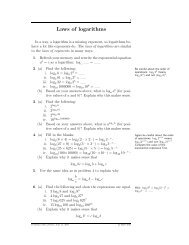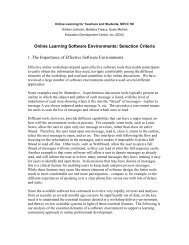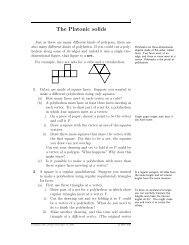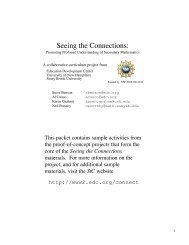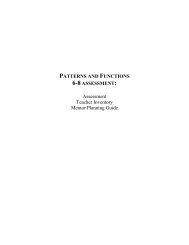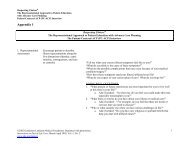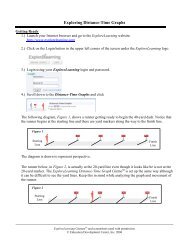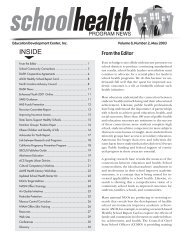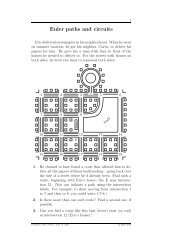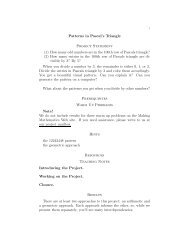It is critical to overcome the digital divide - Education Development ...
It is critical to overcome the digital divide - Education Development ...
It is critical to overcome the digital divide - Education Development ...
You also want an ePaper? Increase the reach of your titles
YUMPU automatically turns print PDFs into web optimized ePapers that Google loves.
thinking, take a long time <strong>to</strong> complete, and allow students <strong>to</strong> engage actively in variedenvironments. When <strong>the</strong>se elements are included in ‘educational’ learning games, if donecorrectly, <strong>the</strong>n <strong>the</strong> computer games can also be learning experiences for school-basedlearning. However, th<strong>is</strong> ra<strong>is</strong>es two <strong>is</strong>sues: <strong>to</strong> what degree <strong>is</strong> out-of-school technology“We are interested in how multi-user environments (MUVEs) can be used in K-12 settings <strong>to</strong>foster learning. Multi-user virtual environments enable multiple simultaneous participants <strong>to</strong>access virtual contexts, <strong>to</strong> interact with <strong>digital</strong> artifacts, <strong>to</strong> represent <strong>the</strong>mselves throughavatars, <strong>to</strong> communicate with o<strong>the</strong>r participants and with computer-based agents, and <strong>to</strong>enact collaborative learning activities of various types. We designed a MUVE entitled, RiverCity, that teaches science inquiry and process skills <strong>to</strong> middle school students. Our design <strong>is</strong>geared <strong>to</strong>wards students in urban schools with lower SES who might not be engaged bytraditional F2F instruction. In our first pilot…we found <strong>the</strong> multi-user environment wedesigned was motivating for lower SES students and for students of H<strong>is</strong>panic descent.H<strong>is</strong>panic students with low GPA and low SES improved <strong>the</strong>ir content score by approximately20 points across <strong>the</strong> board.”Chr<strong>is</strong> Dede, Professor of Learning Technologies, Harvard Graduate School of <strong>Education</strong>already helping youth develop <strong>the</strong> skills that schools try <strong>to</strong> give <strong>the</strong>m; and, why <strong>is</strong> it sodifficult <strong>to</strong> have formal learning technologies capture youth’s interest in <strong>the</strong> same way asnon-school computer games?Media<strong>to</strong>rs of learning technologiesBarbara Means env<strong>is</strong>ions a classroom where teachers mediate online learning for students(Means, 2000). A qualitative study of low-and high SES schools, however, found that teachers atboth schools tend <strong>to</strong> teach technology as an end in itself (requiring that students master allaspects of PowerPoint ra<strong>the</strong>r than learn how PowerPoint can be an effective/ineffectivecommunication <strong>to</strong>ol) ra<strong>the</strong>r than using it <strong>to</strong> increase <strong>the</strong> potential of student learning(Warschauer et al., 2004). Teachers tend <strong>to</strong> integrate technology less with low achievers(Dividing Lines, 2001). In order <strong>to</strong> integrate technology effectively, teachers must learn <strong>to</strong> see<strong>the</strong>mselves as media<strong>to</strong>rs and let go of <strong>the</strong> expectation that <strong>the</strong>y will be <strong>the</strong> expert (Dede, 2004).16



